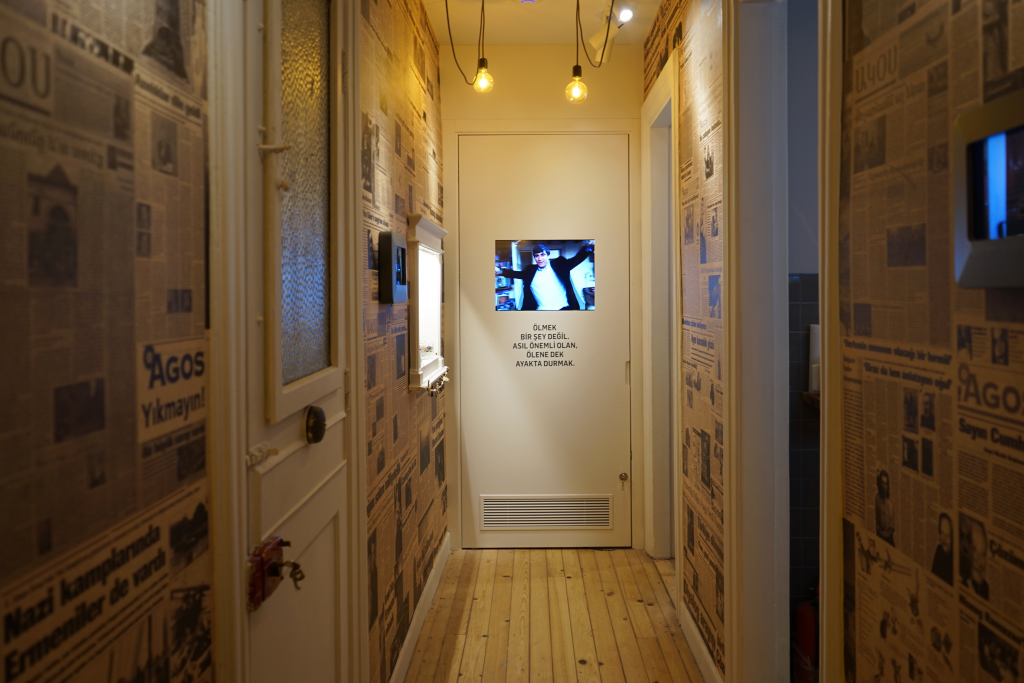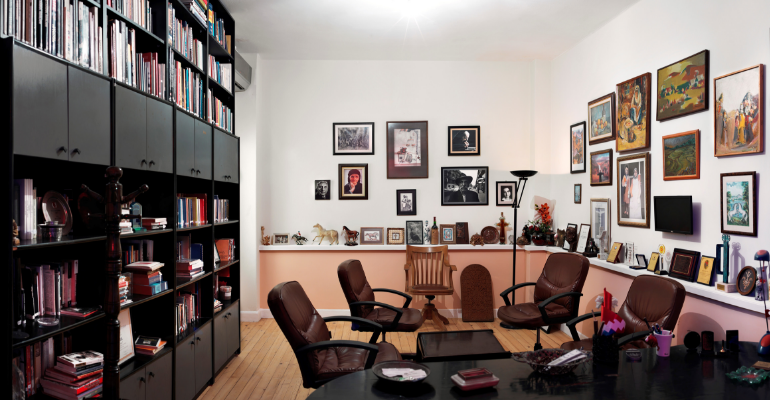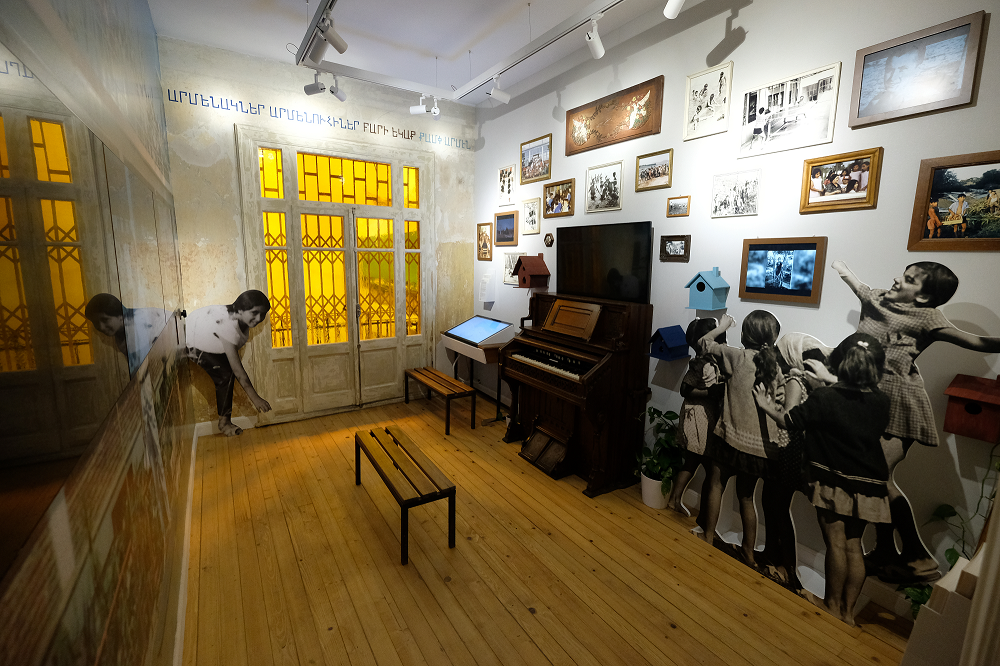Hrant Dink Site of Memory
Oriol López Badell, Historian, EUROM coordinator
Cover picture: Atlantis Civilization Room-Photo | Mıgırdiç Arzivyan
In June 2019, Istanbul welcomed a new site of memory very close to Taksim Square, the epicentre of contemporary Turkey’s pro-democracy demonstrations. The venue, which bears the enigmatic name of “Twenty three and a half”, is dedicated to the figure of the Turkish-Armenian journalist Hrant Dink, who was assassinated in 2007 in front of the building that now houses his memorial. The venue’s space, which is relatively small, modern and ingeniously designed, occupies the former offices of the newspaper Agos, a prominent publication for Turkey’s Armenian community, where Dink served as editor-in-chief. Agos was founded in 1996 as a newspaper whose various subjects included pursuing investigations into the conflicts of the past, such as the Armenian genocide instigated by the Turkish government in 1915. The paper’s articles often sparked controversy among the more conservative sectors of Turkish society and eventually became a pretext for death threats against its founder, Dink.
The turning point came in 2004 when Dink published an article revealing that the adopted child of Kemal Atatürk, who is regarded as the father of modern Turkey, was an Armenian orphan. Based on statements from relatives of the girl, the article brought to light that Atatürk’s daughter, Sabiha Gökçen, a national symbol and a role model for Turkish women, had been adopted from an orphanage in Armenia. The news was taken as an affront by a large part of the population. A few days later, the deputy governor of Istanbul summoned Dink and demanded that he “be careful” with what he published, and a number of anti-Dink protests took place outside the Agos newspaper offices. The courts issued a stream of threats and rulings until three years later, on 19 January 2007, a seventeen-year-old man made an arrangement ostensibly to meet with Dink and then shot him to death.

Corridor | Hrant Dink Foundation 
Salt and Light-Installation by Sarkis | Hrant Dink Foundation
Since then, there have been a host of initiatives to remember Dink: every year on the anniversary of his assassination, thousands of people gather in front of the newspaper’s offices, and in 2012 a commemorative plaque was laid in the pavement on the spot where Dink was murdered. At the same time, a group of Dink’s family members, friends and co-workers began to consider the possibility of creating a memorial site at the Agos offices that might serve not only to remember Dink, but also to uphold and defend the history and culture of the Armenian population in Turkey as well as the rights of all minorities. As work began on the project, they decided to create both a local advisory committee and an international one made up of artists, historians and university professors, from Turkey and from other countries, who would oversee the entire process of creation. One of the recommendations from the two advisory committees was to learn from the experience of museums and monuments around the globe. Over months of intense work, the team at the Hrant Dink Foundation paid a visit to 65 museums and more than twenty monuments in ten countries in Europe, Africa and the Americas.
Their visits certainly enriched the conception of the memorial to Hrant Dink and may have even inspired the design of some of its rooms. Beyond doubt, though, the new memorial bears its own individual stamp. The space is neither strident nor shrill and the utmost respect has gone into its installation within the former newspaper offices. Nor is the museography intrusive. Rather, it is well-suited to the environment, incorporating the most modern techniques, such as cameras that can record a visitor’s personal message, while at the same successfully preserving the newspaper’s work environment, making any visit a pleasant experience. Even the small kitchen where the Agos staff heated up their lunch is now an open space where visitors can stop for a coffee or take a short break. Going through the memorial, the visitor will find out all about the life of Hrant Dink, learn about the diversity of Turkish society and gain an in-depth knowledge of the reality of Turkey’s Armenian community. In addition, each of the small rooms contains printed copies of short press articles that can be taken home for further study and reflection. The last room on the visit is Hrant Dink’s office, a space frozen in time, which remains exactly as the journalist left it and now features a major work of contemporary art by the French-Armenian artist known as Sarkis.

And where does the name of the new memorial come from? It takes its name from an article that Hrant Dink published in 1996, entitled “23.5 April”,in which he described the importance of two significant dates: 23 April, Turkey’s national sovereignty and children’s day, and 24 April, the day commemorating the start of the Armenian genocide. In his article, Dink as a Turkish-Armenian citizen chose a number midway between the two dates in order to put across the idea of a shared future lived in peace and constant dialogue.
